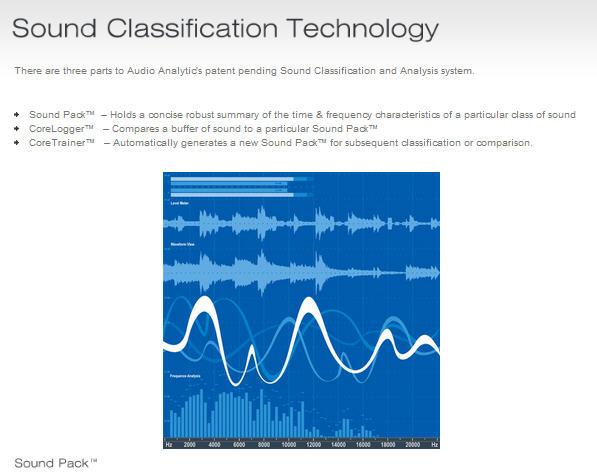On the same day that UK Business Secretary, Vince Cable, has been explaining that Government sees "no justification for taxpayers' money being used to support research which is neither commercially useful nor theoretically outstanding" and that universities will be expected to "do more for less" an event has been showcasing the latest near-market products and technologies that have evolved from just such research.
[youtube]5yMEYXweFjc[/youtube]
The 'Meerkats and Avatars' event held at the Hauser Forum and organized by St John's Innovation Centre, took place today and served as a great reminder that commercially viable science and technology innovation is most certainly not dead in the water. Of course, you would expect nothing less from Cambridge which has just been voted the number one university in the world , beating Harvard, Oxford and Yale.
Speaking at the event, Martin Graham, former Head of Markets at the London Stock Exchange proposed a new type of stock exchange that would increase liquidity into the market for growth businesses and help innovation drive society forward, arguing that "new products, services and technologies are key to economic recovery". Graham, founder of the CMX Capital Markets Exchange platform, admits is can be difficult for investors to identify early-stage businesses with real-world commercial potential and as a result more than half of those businesses getting short term 'Angel' support go under. "Short-term investment means that valuable time is spent chasing new sources of funding, rather than developing the business" he added.
David Gill, MD of high technology incubator St John’s Innovation Centre which organized the event, agrees that the current markets for the kind of young and high-impact tech firms coming out of Cambridge University is ineffective. His keynote presentation 'Beyond the collapse of the funding escalator' highlighted how the mechanism which finances the risk of innovation is both outdated and inefficient. "Some 1,400 technology-based businesses employing 40,000 people are based around Cambridge, including world-class companies such as ARM Holdings and Autonomy Corporation, but we have to ask, how would their successors find funding today?" Gill points out, adding that even if Government were to withdraw investment then legislation could be used instead in order to create private funds that would be more likely to succeed.
Some of the companies showcasing their 'near market' technologies included:
Audio Analytic showcased a method of recognising the sounds of aggression . A technology that enables CCTV to automatically recognise warnings such as car alarms or signs of aggression and then rapidly alert security guards to crimes being committed. the idea being that everything from glass being broken through to people shouting could act as signals of a potential crime, especially if the camera 'hearing' that signal could identify itself on the bank of upwards of a hundred screens that a guard may have to monitor. The sound-recognition software was developed by Christopher Mitchell as part of his PhD at Anglia Ruskin University. The software is clever enough to pick up signs of aggression such as raised voices and Christopher sees huge potential for the technology in hospitals, for example: "If it can reduce verbal and physical attacks on hospital staff it will dramatically improve their working conditions". The software even gets around the problem of it being illegal to record sound from CCTV cameras in some countries due to giving security guards access to private conversations. It does this by being able to store a short clip of the sound recording once an alert has been flagged, and this then being made available to law enforcement as part of any on-going criminal investigation.
InputDynamics has developed a technology that makes an entire telephone handset touch-sensitive and which, remarkably, can be retro-fitted to an existing device. The relatively simple solution to bringing cost-effective touchscreen technology to the masses revolves around using the acoustic signal produced by tapping the screen or handset. It's possible to interact with a suitably equipped phone by simply tapping or swiping the handset, just as you would an iPhone or Android screen. As well as freeing UI designers from the constraints of non-touch screens and keypads, it is envisaged that by bringing the casework into the touch equation a whole new swathe of functionality might open up. The existing phone handset microphone is deployed in the solution, and the touchscreen system itself is entirely software based with no additional hardware requirement. A tap of the phone body can select a number to call, a swipe can scroll a web browser screen and so on. Mike Bradley, director of business development at the Cambridge-based company, says "our technology will improve handset usability and allows users to take advantage of the broad range of apps and web-based services that are available".
Omnisense has created a system which could be used to accurately track miners and equipment underground in real-time , but without the need for any fixed infrastructure, by using mesh networking. The wireless sensor network system it has developed allows for unique geolocation functionality by using lightweight tags that determine position relative to other tags and which is accurate to 3 metres. Andy Thurman, Omnisense’s Chief Operating Officer, explains that hundreds of miners are injured or killed around the world every year in mine accidents. The incredible events in Chile are just one example. "It is often costly and impractical to install fixed infrastructure location systems when the mine is continuously changing, and the performance of these infrastructures varies over time in mine environments" Thurman says, adding that by tagging both the miners and their vehicles his system "allows operators to know where they are relative to each other, preventing accidents and reducing fatalities, and allowing them to be found after an accident." And all without the need for any permanent infrastructure to be pre-installed. Above ground, incorporating GPS into a small number of the devices allows the network to provide information not just about the relative location of the tags but also their absolute positions.

